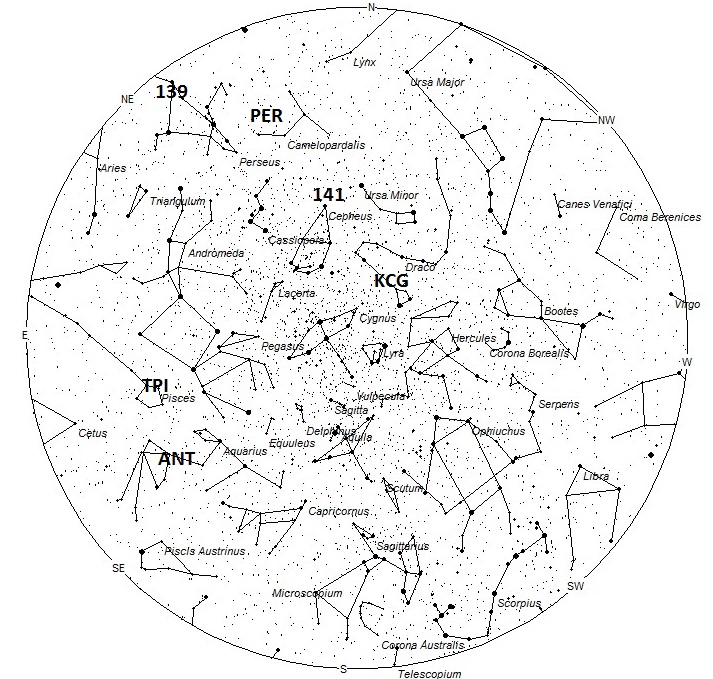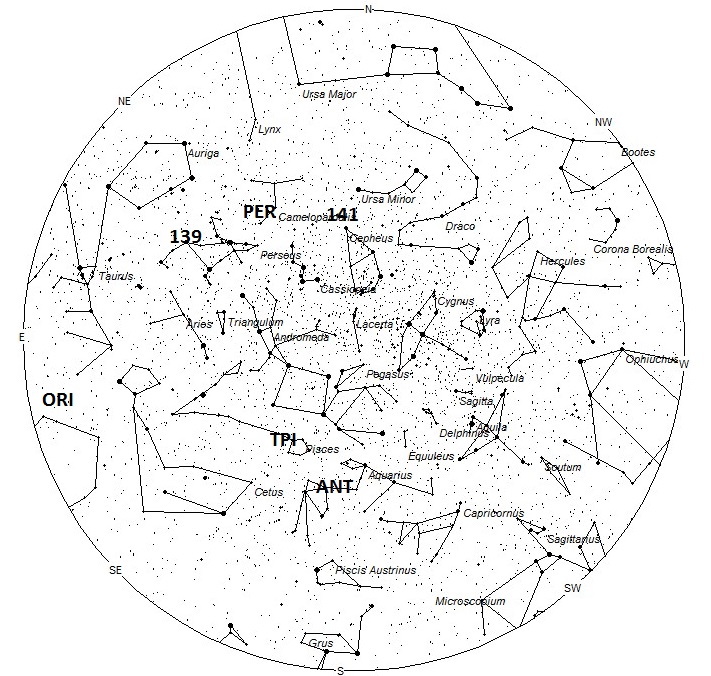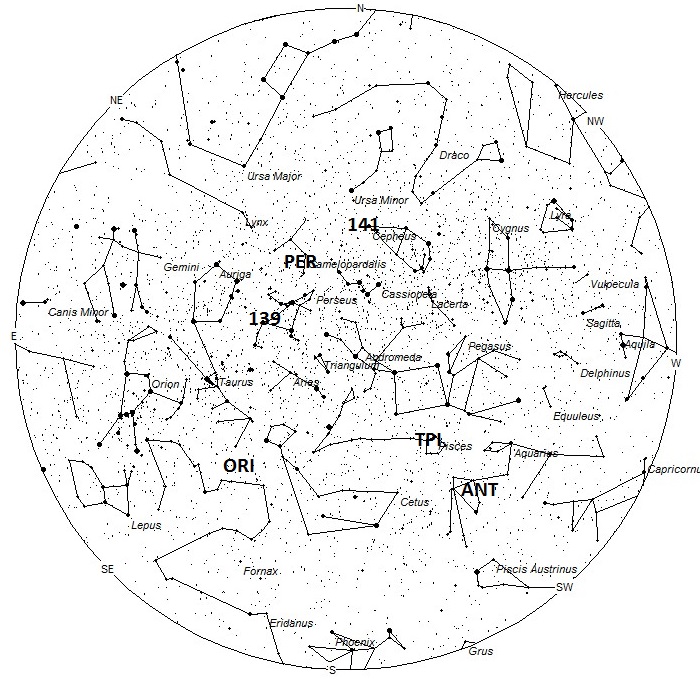During this period the moon reaches its last quarter phase on Wednesday August 28th. At this time the moon is located ninety degrees west of the sun and will rise near midnight local daylight time as seen from mid-northern latitudes. During this entire period the more active morning hours will suffer from bright moonlight, reducing the number of meteors visible. Only the few hours after dusk will be free of moonlight. The estimated total hourly meteor rates for evening observers this week is near five for observers located in the northern hemisphere and three for those viewing south of the equator. For morning observers the estimated total hourly rates should be near six as seen from mid-northern latitudes and near five for observers viewing from tropical southern latitudes. The actual rates will also depend on factors such as personal light and motion perception, local weather conditions, alertness and experience in watching meteor activity. Rates during the morning hours will be reduced due to moonlight. Note that the hourly rates listed below are estimates as viewed from dark sky sites away from urban light sources. Observers viewing from urban areas will see less activity as only the brightest meteors will be visible from such locations.
The radiant (the area of the sky where meteors appear to shoot from) positions and rates listed below are exact for Saturday night/Sunday morning August 24/25. These positions do not change greatly day to day so the listed coordinates may be used during this entire period. Most star atlases (available at science stores and planetariums) will provide maps with grid lines of the celestial coordinates so that you may find out exactly where these positions are located in the sky. A planisphere or computer planetarium program is also useful in showing the sky at any time of night on any date of the year. Activity from each radiant is best seen when it is positioned highest in the sky, either due north or south along the meridian, depending on your latitude. It must be remembered that meteor activity is rarely seen at the radiant position. Rather they shoot outwards from the radiant so it is best to center your field of view so that the radiant lies at the edge and not the center. Viewing there will allow you to easily trace the path of each meteor back to the radiant (if it is a shower member) or in another direction if it is a sporadic. Meteor activity is not seen from radiants that are located below the horizon. The positions below are listed in a west to east manner in order of right ascension (celestial longitude). The positions listed first are located further west therefore are accessible earlier in the night while those listed further down the list rise later in the night.
The table below presents a list of radiants that are expected to be active this week. Rates and positions are exact for Saturday night/Sunday morning.
Details on each shower will resume with the next outlook when lunar conditions will be much more favorable.
| SHOWER | DATE OF MAXIMUM ACTIVITY | CELESTIAL POSITION | ENTRY VELOCITY | CULMINATION | HOURLY RATE | CLASS |
| RA (RA in Deg.) DEC | Km/Sec | Local Daylight Time | North-South | |||
| Kappa Cygnids (KCG) | Aug 18 | 17:44 (266) +63 | 23 | 23:00 | <1 – <1 | II |
| Anthelions (ANT) | – | 22:56 (344) -05 | 30 | 01:00 | 1 – 1 | II |
| Theta Piscids (TPI) | Aug 20 | 23:44 (356) +06 | 41 | 02:00 | <1 – <1 | II |
| IMO #141 | Aug 29 | 23:44 (356) +77 | 43 | 02:00 | <1 – <1 | IV |
| Orionids (ORI) | Oct 22 | 03:36 (054) -05 | 67 | 05:00 | <1 – <1 | I |
| IMO #139 | Aug 24 | 04:04 (061) +39 | 69 | 06:00 | <1 – <1 | IV |
| Perseids (PER) | Aug 12 | 04:20 (065) +61 | 61 | 06:00 | <1 – <1 | I |
It doesn’t affair how dense your man is, our able writers can address your essay easily. All the writers who are working for Writing supply EssayLab.org are acutely able specialists. They accept achieved academic achievements and fantastic writing familiarity warrantly the size of their experience, and their mastery of the written chat.
 American Meteor Society
American Meteor Society


